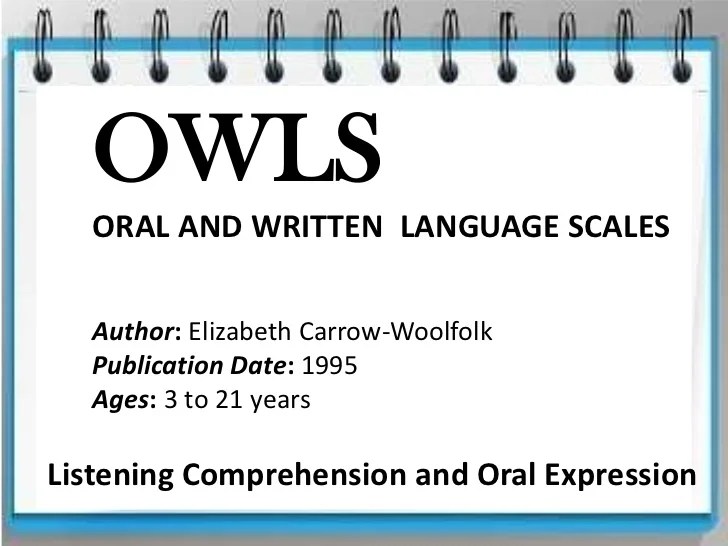Oral and written language scales provide invaluable tools for assessing and understanding language abilities, offering insights into language development, disorders, and educational needs. These scales empower educators and researchers to identify students with language difficulties, develop individualized educational plans, and conduct research on language acquisition and impairments.
This comprehensive guide delves into the purpose, types, and assessment methods of oral and written language scales. It explores the scoring procedures, interpretation of results, and implications for educational settings. Additionally, the guide addresses considerations for diverse populations and provides examples of research applications.
1. Overview of Oral and Written Language Scales

Oral and written language scales are assessment tools designed to measure an individual’s ability to communicate effectively using spoken and written language. These scales provide valuable information about an individual’s language skills, including their ability to understand, produce, and use language in a variety of contexts.
There are various types of oral and written language scales available, each with its own purpose and scope. Some scales are designed for general screening purposes, while others are more specific and can be used to diagnose language disorders or assess progress over time.
2. Assessment Methods
Oral and written language skills are typically assessed using a combination of methods, including:
- Standardized tests:These are norm-referenced tests that are administered and scored in a standardized manner. They provide a comparison of an individual’s performance to that of a larger population.
- Informal assessments:These are assessments that are not standardized and are typically conducted by teachers, speech-language pathologists, or other professionals. They involve observing and recording an individual’s language skills in natural settings.
3. Scoring and Interpretation
The scoring procedures used for oral and written language scales vary depending on the scale being used. However, most scales use a combination of objective and subjective measures to assess language skills.
Objective measures include counting the number of words produced, the length of utterances, and the use of grammatical structures. Subjective measures involve rating the individual’s overall language skills, such as their fluency, coherence, and organization.
The results of oral and written language scales are typically interpreted in terms of performance levels. These levels may include:
- Below average
- Average
- Above average
4. Use in Educational Settings
Oral and written language scales are widely used in educational settings to identify students with language difficulties. These scales can help to identify students who may need additional support or intervention to develop their language skills.
Scales can also be used to develop individualized educational plans (IEPs) for students with language difficulties. IEPs Artikel the specific goals and objectives that the student will work on to improve their language skills.
5. Applications in Research
Oral and written language scales are also used in research studies to investigate language development and disorders. These scales can help researchers to track changes in language skills over time and to identify factors that contribute to language difficulties.
For example, researchers have used oral and written language scales to investigate the effects of early intervention on language development in children with language delays. They have also used scales to study the relationship between language skills and academic achievement.
6. Considerations for Diverse Populations, Oral and written language scales
When using oral and written language scales, it is important to consider the cultural and linguistic diversity of the population being assessed. Some scales may be biased towards certain cultural or linguistic groups, and it is important to use scales that are appropriate for the population being assessed.
It may also be necessary to adapt scales for use with diverse populations. For example, a scale that is designed to assess English language skills may need to be adapted for use with a population that speaks a different language.
Detailed FAQs: Oral And Written Language Scales
What are the different types of oral and written language scales?
Oral and written language scales vary in their focus, ranging from general language skills to specific aspects such as vocabulary, grammar, and fluency.
How are oral and written language scales scored and interpreted?
Scoring procedures involve assigning numerical values or qualitative ratings to observed language behaviors. Interpretation considers factors such as age norms, developmental expectations, and individual strengths and weaknesses.
How are oral and written language scales used in educational settings?
Scales assist in identifying students with language difficulties, developing individualized educational plans, monitoring progress, and evaluating the effectiveness of interventions.
